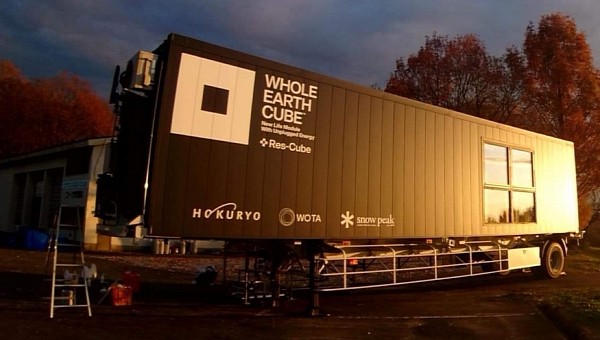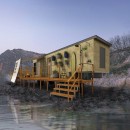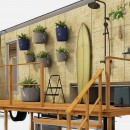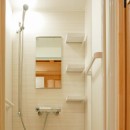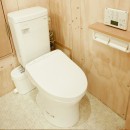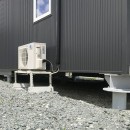The tiny living movement is increasingly popular in many parts of the world. Still, for those who want to take it a step further, it’s not just about downsizing but also about having more freedom. The freedom to move around is also correlated to being self-sufficient anytime and anywhere.
Folks in the U.S. are familiar with various types of tiny homes built specifically for off-grid living, but this new model comes from Japan. It’s called the Whole Earth Cube, and KTLA reports that it was officially presented at this year’s Combined Exhibition of Advanced Technologies (CEATEC), considered the most important IT and electronics annual event in Japan.
You might be wondering why a tiny house is displayed at this event. The Whole Earth Cube is no ordinary dwelling. Designed by Hokuryo, it’s presented as the housing version of wireless technology or as an “unplugged” house. The initial idea was apparently meant for disaster readiness, which is why it’s self-sufficient. But the project evolved, turning into a tiny home that’s suitable for permanent off-grid living, not just as a solution for emergency situations.
Roughly the size of a shipping container and made mostly of wood, the Whole Earth Cube is fitted with solar panels and large batteries for storing that power. It also has a gas-powered generator for backup. As a result, the kerosene tank used for heating and hot water only needs to be refilled about once a year.
Water is collected either when it rains or from rivers, then filtered. Two separate systems provide the water for showers, dishwashing, and laundry on one hand and collect wastewater, on the other hand, in a dedicated tank.
Not just sustainable and self-sufficient, this tiny house is also technologically advanced. For example, the power system can be monitored constantly, with the data displayed on a special tablet. An advanced communication system also includes huge, vertical screens for a more “realistic” experience.
For now, this off-grid tiny house is still a concept, but it’s expected to enter production by next year in Japan.
You might be wondering why a tiny house is displayed at this event. The Whole Earth Cube is no ordinary dwelling. Designed by Hokuryo, it’s presented as the housing version of wireless technology or as an “unplugged” house. The initial idea was apparently meant for disaster readiness, which is why it’s self-sufficient. But the project evolved, turning into a tiny home that’s suitable for permanent off-grid living, not just as a solution for emergency situations.
Roughly the size of a shipping container and made mostly of wood, the Whole Earth Cube is fitted with solar panels and large batteries for storing that power. It also has a gas-powered generator for backup. As a result, the kerosene tank used for heating and hot water only needs to be refilled about once a year.
Water is collected either when it rains or from rivers, then filtered. Two separate systems provide the water for showers, dishwashing, and laundry on one hand and collect wastewater, on the other hand, in a dedicated tank.
Not just sustainable and self-sufficient, this tiny house is also technologically advanced. For example, the power system can be monitored constantly, with the data displayed on a special tablet. An advanced communication system also includes huge, vertical screens for a more “realistic” experience.
For now, this off-grid tiny house is still a concept, but it’s expected to enter production by next year in Japan.
